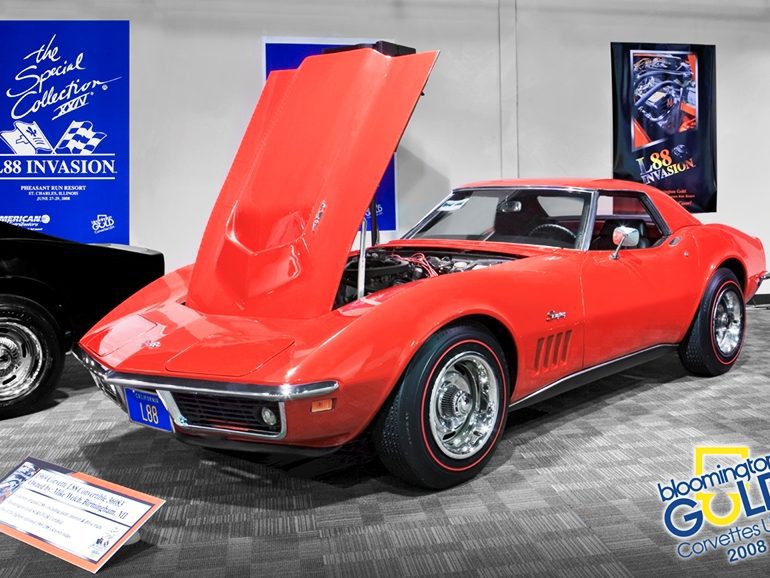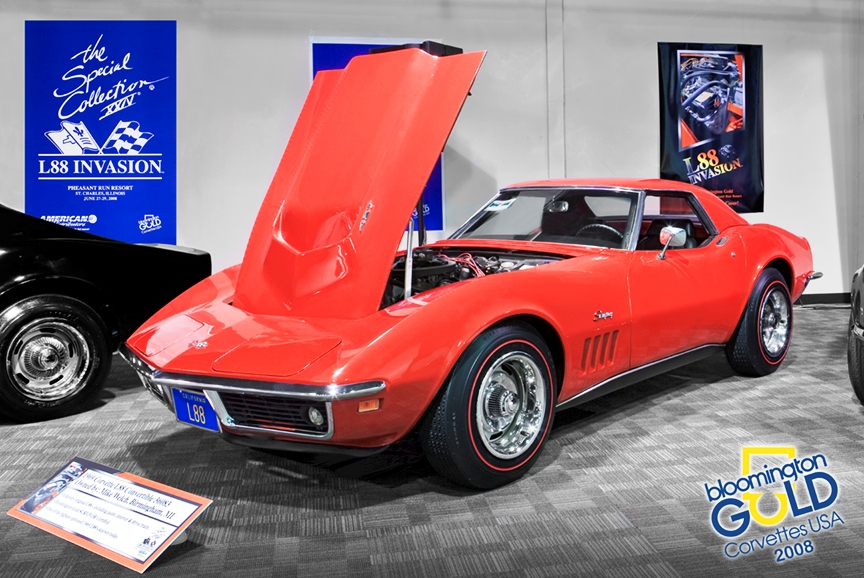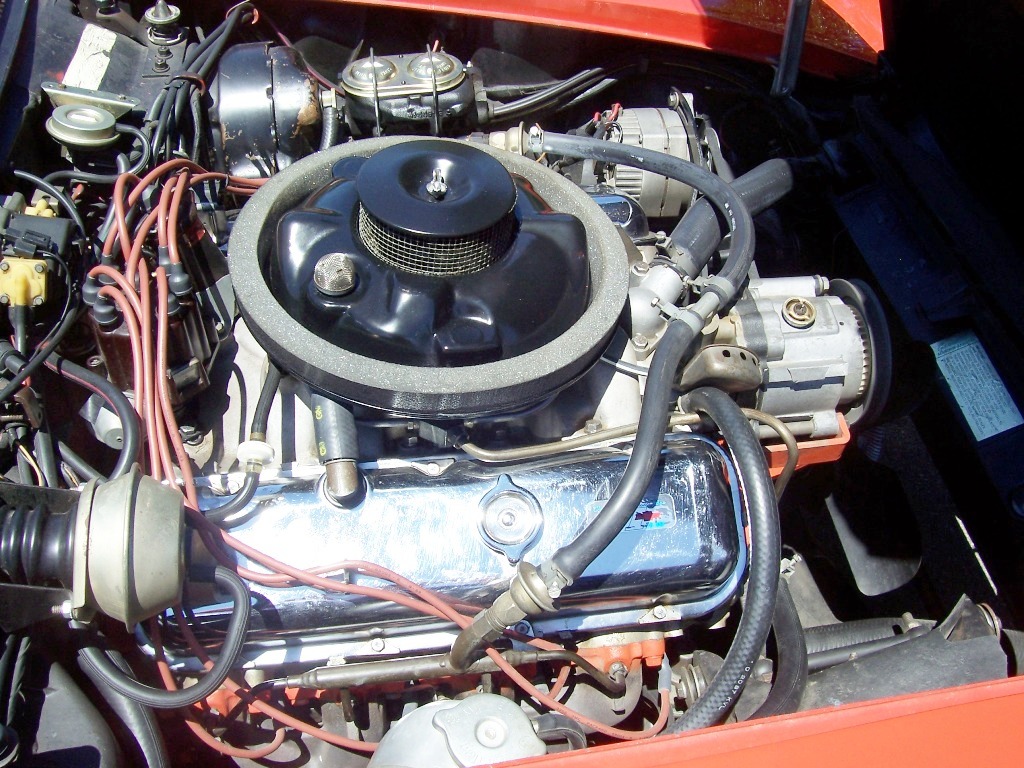1968 Chevrolet Corvette Stingray L88 Convertible
The biggest and baddest Corvette of them all was the L88 built from 1967 to 1969. What set this car apart was a comprehensive racing package that included the big block V8 with solid-lifters and Can-Am-spec cylinder heads. This was the same unit that powered the red, white and blue Sunray DX racer to a class victory at the 1967 12 Hours of Sebring and was later offered in a factory road car straight from the St. Louis, Missouri assembly line.
The story of the L88 beings with the introduction of Zora Arkus-Duntov to Chevrolet. Duntov was the first to motivate Chevrolet to install a manual transmission and larger engine into the Corvette, turning the 1956 version into a genuine sports car. Duntov would later convince GM to race and upgrade the Corvette into the L88 with motivation from Don Yenko and the Sunray DX Motorsports team. To make the car eligible for SCCA A-Production and FIA GT events, the L88 had to be a standard factory option so GM quietly offered it to the public.
Read more: Learn about the Corvette Stingray L88 coupe here.
As an option code on the 1967 to 1969 models, L88 was an almost secret offering. Chevrolet actively discouraged L88 orders from dealerships and the public. Just what was all the fuss about? The L88 was capable of 171 mph at Le Mans and sported more than 500 horsepower. It was developed for the track and never intended as a boulevard cruiser.
The L88 was first offered to teams such as Sunray DX Motorsports who contested Corvettes in events such as the Sebring and Daytona. Packed with factory competition hardware, the L88 package was an ordering option that made the Corvette a pure race car. Only 20 cars were made in 1967, largely for racing, but nearly 200 L88s were ordered on the C3 platform.
At the heart of the L88 package was a 427 similar only in block casting to the big-block engine first offered in 1966. After two years of development, almost every other component was reconsidered for power and racing endurance. The engines were all built at the Tonawanda, New York plant and featured the CanAm-spec aluminum heads with 2.19-inch intake and 1.84-inch exhaust valves.
At almost half the price of the L88 engine, the L71 officially appeared to offer the same performance at a marked discount. However, GM was fudging the numbers to keep the L88s off the road, making the L88 essentially the hidden, more potent, option. The L88 even donned a warning sticker on the center console that emphasized only racing fuel was adequate for the large valves and radical timing. While the L71 and L88 shared the same displacement, L88’s took the big-block theme a step further by adding a strengthened crankshaft, 12.5:1 pistons, solid lifter, cold air induction and a 850 CFM dual feed Holley carburetor.
As with any racing car, the L88 left out the fan shroud, choke and often, the heating system. With its exhaust removed, and running on racing fuel, the L88 was capable of 600 horsepower which was more than enough to take class victory at the 1967 Sebring 12 Hours. On the road, and far above GM’s 435 bhp figure, the L88 can claim anywhere from 550 to 570 horsepower in production trim.
The L88 included much more than just an engine upgrade. Mandatory factory upgrades included a Muncie M22 Rock Crusher or M20 Hydramatic Transmission, power-assisted heavy duty brakes, an F41 heavy duty suspension with new coil springs and dampers, G81 positraction differential and a special cowl induction hood. Furthermore, interior options such as air conditioning, a heater/defroster system and a radio were were not available. After all was said and done the the L88 doubled the price of a standard Corvette.
L88s were produced from 1967 to 1969 and during the transition from the C2 Stringray to the C3 body style. As a limited series of around 200 cars, the L88 was sold in both coupe and convertible form. The rarest cars are 20 1967 L88 Corvettes. Due to stringent emissions standards, the L88 was forced to be canceled in 1969.
1968 Chevrolet Corvette Stingray L88 Convertible Pictures
See the full 1968 Chevrolet Corvette Stingray L88 Convertible Image Gallery
In Detail
| submitted by | anonymous |
| type | Limited Production Car |
| built at | St. Louis, Missouri, USA |






